Part 9
The World of Takamine Go: Blood (chi), Earth (chi), Wisdom (chi), Foolishness (chi), and “chi”
Takamine Go’s emergence has clearly punctuated the history of Okinawan film. Previously, most films about Okinawa expressed an outside perspective, the consciousness of auteurs reaching across borders, and could only express Okinawa in terms of stereotypes. In the array of Takamine’s visual images that appear in this “Special within a Special Program,” we are able to deeply appreciate the magic realism and multiple Okinawas that emerge. The right thing to do is plunge into Takamine’s world, before trying to comprehend it in words. Only one conclusion can be drawn. When we think of the films about Okinawa that were made before and after Takamine appeared, we can see that things have clearly changed. That much is certain.
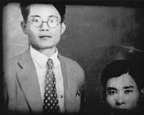 Sashingwa (Dear Photograph)
Sashingwa (Dear Photograph)
- 1973 / No dialogue / Color, B&W / 8mm / 15 min
Director, Photography: Takamine Go
Music: Takamine Eiko, Takamine Mitsu
Production, Source: Takamine Productions
Chronology of family memories made intimate by augmenting family photos with color and rhythmically fading the images in and out. Originally filmed in 8mm to document a solo exhibition of hand-tinted photographs, the fading in and out infuses the photographs with gentle movement and intervals, giving birth to images that are like poetry.
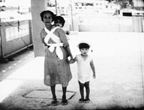 Okinawan Dream Show
Okinawan Dream Show
- 1974 / No dialogue / Color / 8mm / 180 min
Director, Photography: Takamine Go
Sound: Tarugani
Production, Source: Takamine Productions
Road movie with a unique perspective on the landscape of immediate post-reversion Okinawa. This film disentangles a gaze distanced from chronological time, and focuses on the fleeting moments seen in passing landscapes and occasions of everyday life. It’s almost a miracle that a film welded solely to everyday life and the landscape of the road could be born during the politically charged season of Okinawa’s reversion. This film became the foundation of Takamine’s filmmaking style.
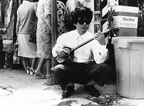 Okinawan Chirudai <Special Edition>
Okinawan Chirudai <Special Edition>
- 1976- / Okinawan, Japanese / Color, B&W / Video / 78 min / Japanese subtitled version
Director, Photography: Takamine Go
Sound: Tarugani
Line Editing: Hosoda Nobuhiko, Oka Takafumi, Okubo Shunsuke, Tayama Tomohiro
Music: China Sadao, Teruya Rinken
Cast: Taira Tomi, Abe So, Teruya Rinsuke, Kacchan, Miyazato Eiko
Production Cooperation: Visual Arts College Osaka
Production, Source: Takamine Productions
This film uses an omnibus format to combine the unfinished Okinawan Hadari with the original Okinawan Chirudai. The original Okinawan Chirudai uses “time” as a clue for depicting Okinawa’s metamorphosis six years following reversion to mainland Japan. Here we find a mysterious world where real and mythical time undergo phantasmagoric transformations.
Paradise View
-
1985 / Okinawan, Japanese / Color / 16mm (orig. 35mm) / 113 min Japanese and English subtitled version
Director, Script, Art Design: Takamine Go
Photography: Toshioka Takao
Editing: PTC
Sound: Higashi Mitsuo
Music: Hosono Haruomi
Producer: Anan Mitsuzo
Cast: Kobayashi Kaoru, Togawa Jun, Hosono Haruomi, Ogimi Shizuko, Hazama Yoshiko
Production Company: Heatburn Productions
Source: The Japan Foundation
An impressive film by Takamine Go, whose foray into fiction began with Okinawan Chirudai. This work showcases his ability to generate his own world and his unique qualities as a filmmaker. Set in Okinawa on the eve of reversion, the story creates a unique world, freely interpreting the customs, legends and folktales related to the collective consciousness of the people. The film depicts a world overflowing with allegory and fantasy, and the maze of Okinawa wandering in the interval between the American and Yamato eras.
Untamagiru
-
JAPAN / 1989 / Okinawan, Japanese, English / Color / 35mm / 120 min / Japanese and English subtitled version
Director, Script: Takamine Go
Photography: Tamra Masaki
Editing: Yoshida Hiroshi
Sound: Kawashima Kazuyoshi
Music: Ueno Koji
Executive Producer: Masuda Tsuji
Producer: Yamada Akiyoshi
Co-producers: Ito Junichi, Hariu Natsuki
Cast: Kobayashi Kaoru, Togawa Jun, Aoyama Chikako, Hazama Yoshiko, Taira Susumu, Teruya Rinsuke, Miyasato Eiko, Taira Tomi
Production Company, Source: PARCO
Representative work by Takamine Go that opens up the possibilities of multiple-voiced narratives and fantasy from Okinawa. Dreams and reality, this world and worlds beyond, man and spirits all mingle in this story set in Okinawa shortly before reversion to the mainland. The story revolves around a feud between protagonist Giru, who had a relationship with the pig incarnation Mare, and Chief Nishihara, who lovingly raised Mare to be a messenger from the Okinawan paradise niraikanai. Using the circular narrative of a dream stolen/ being stolen, the film probes the place of dreams and the era Okinawa was maneuvering through.
Kadekaru Rinsho: Songs and Stories
(“Kadekaru Rinsho: Uta to katari”)-
1994 / Okinawan, Japanese / Color / Video / 59 min / Japanese subtitled version
Director, Editing: Takamine Go
Original Idea, Planning: Nakazato Isao, Takamine Go
Photography: Hirata Mamoru, Omori Shin, Katsuren Takashi
Music: Kadekaru Rinsho
Production Company, Source: Sesco Japan
A documentary composed of interviews with and songs by the eccentric singer Kadekaru Rinsho. Fourteen songs from “Times are Changing” to “Shinobi nakafu” were recorded outdoors in Taketomi Island and the Koza area. Against the backdrop of this landscape each song describes the conditions in Okinawa and resonates with the life and times of Kadekaru Rinsho. The many anecdotes created through his artful storytelling were part and parcel of Kadekaru’s lifestyle. Charming dialogue with the eccentric singer who lived and sang like the wind.
 Tsuru-Henry
Tsuru-Henry
(“Mugen Ryukyu: Tsuru Henri”)- 1998 / Okinawan, Japanese, English, Taiwanese / ColorVideo / 90 min / Japanese subtitled version
Director: Takamine Go
Script: Takamine Go, Nakazato Isao
Photography: Hirata Mamoru
Editing: Ukai Kunihiko
Sound: Bise Satoshi, Matsuda Naoto
Music: Ueno Koji
Art Director: Muragishi Manavu
Cast: Oshiro Misako, Miyagi Katsuma, Toma Miezo, Taira Susumu, Taira Tomi, Oyadomari Chushin
Production, Source: Takamine Productions, Citizen’s Produce System
Tsuru, a wandering singer of Okinawan folk songs, and her son Henry accidentally come across the script of Love’s Love and through the voyage of turning it into a film create a road movie about the memory and stigma inscribed onto people’s bodies and the land called Okinawa. The driving force behind the narrative development of Paradise View and Untamagiru was the relationship between Okinawa and Japan, creating the phantasm of Okinawa in the space where blood and earth, wisdom and foolishness are interwoven. In contrast, Tsuru-Henry uses multiple genealogies—perhaps even the superimposition of many points—to create a new narrative of travel.
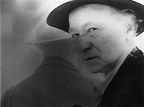 Private Images of Ryukyu: J.M.
Private Images of Ryukyu: J.M.
(“Shiteki satsu mugen Ryukyu: J•M”)- 1996- / Okinawan, Japanese, Lithuanian, English / Color / Video / 54 min / Japanese subtitled version
Director, Editing: Takamine Go
Appearance: Jonas Mekas
Source: Takamine Productions
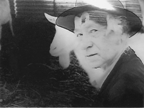
This personal film was inspired by Jonas Mekas’ visit to Okinawa in 1996. Distinctive camerawork shows Mekas strolling along the seaside, through towns and around a castle in the northern part of the Okinawan main island, and scenes of screenings, discussions, and singing and dancing to the sanshin (Okinawan shamisen). After Mekas’ departure, Takamine stayed in Okinawa and continued to film. The camera blithely takes in a cross section of Okinawa in 1996. Can be seen as the contemporary version of Okinawan Dream Show.
